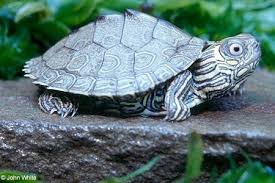Tips and tricks for caring for your new friend. General information.
Cockatiels
Cockatiels live 15-25 years. They are very social birds that need daily interaction and stimulation. Giving them a balanced and varietal diet of fruit, vegetables, seeds and pellets will help ensure a happy and healthy bird. Try to avoid an all seed diet as it can lead to health problems such as mineral or vitamin deficiencies. Cockatiels produce feather dust that can be an allergen to some people. Ensuring a clean environment and having access to fresh water to bath themselves will help to keep the dust manageable. They are sensitive to temperature changes and need access to sunlight. Do not leave them in direct sunlight for an extended period of time. An hour or two a day in a temperature controlled environment should be sufficient for their health. (contact a vet or specialist if you are ever unsure of your pets health or needs)

Parakeets
Parakeets are also known as Budgies. They are very intelligent creatures known for their bright colors and ability to mimic human words or noises. They need a large space to fly and move around and at least 30 minutes a day interaction with their companions or human. Balanced diet of seeds, pellets, and fresh foods. They live 10-15 years with proper care. Parakeets are highly social birds and can form strong bonds with their owners.
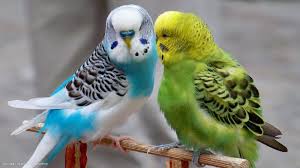
Green cheek conures
Green cheek conures are small, intelligent parrots known for their playful, social, and mischievous nature, often called “big bird personalities” in a small body. They thrive on social interaction with their human “flock” or other conures and require consistent stimulation through toys, chewing items, and foraging to prevent behavioral issues like feather picking. While considered a relatively quieter conure species, they can be noisy and prone to nipping and chewing, especially when young. Their life expectancy is 25–30 years or more with proper care, which includes a species-appropriate diet, a spacious cage, and regular contact with an avian veterinarian.
Personality and Social Behavior
- Playful & Affectionate:They are known for their high energy, clown-like antics, and love for cuddling and physical contact.
- Social & Needs Companionship: Conures are flock animals and benefit greatly from companionship, either with another bird or with significant human interaction and attention.
- Mischievous & Inquisitive:Green cheeks are curious, intelligent, and often get into trouble, requiring constant supervision when outside their cage.
- Nipping & Chewing: They explore with their beaks, so they tend to bite and chew. This behavior can be managed with proper training and appropriate chew toys.
Care Requirements
- Diet: A varied diet including vegetables, fruits, nuts, seeds, and sprouts is essential for their health and well-being.
- Cage & Environment: A spacious cage with enrichment through foraging toys and items to chew on is vital to prevent boredom and destructive behaviors.
- Veterinary Care: check-ups with an avian veterinarian are crucial to catch potential health problems like respiratory infections or feather plucking.
- Training: Patience and positive reinforcement are key to managing behaviors like nipping and for teaching them tricks.
Noise & Talking Ability
- Vocal: While generally quieter than other conure species, they are still capable of making noise and will call out.
- Limited Speech: They are not prized for their talking ability but can learn a limited number of words with extensive training, often with a gravelly voice.

Guinea pig
Guinea pigs are social, herbivorous rodents requiring a species-specific diet of hay, vitamin C-rich vegetables (they can not produce vitamin c naturally), and pellets, and must live in same-sex pairs or groups due to their social nature. They need a large space that must be kept clean. Fresh vegetables and fresh water should be provided every day. Guinea pigs are prone to overheating. Avoid direct sunlight. They are vocal and may communicate through squeals, chirps, and other sounds. They give for 5-8 years.

Sugar glider
Sugar gliders are small, nocturnal marsupials native to Australia and New Guinea that possess a gliding membrane, allowing them to glide between trees. These highly social, omnivorous animals have a lifespan of 10-15 years, are known for their intelligence, and require specific diets and living conditions to thrive. They are not related to rodents. Sugar gliders are nocturnal, this means they are active at night and sleep during the day. They should NOT be kept alone. These are very social creatures and loneliness can lead to self-harm and depression. THESE ARE NOT BEGINNER PETS. There diets include a high quality pellet diet and in the wild they consume a variety of foods. Such as:
Insects: Mealworms, crickets, spiders, and small insects
Tree sap: Eucalyptus and acacia trees
Nectar: From flowers and plants
Fruits: Berries, figs, apples, pears
Vegetables: Carrots, spinach, lettuce

Mongolian gerbils
Mongolian gerbils are small, social, burrowing rodents native to the steppes and deserts of East Asia, known for their curious, docile, and active nature. They live in cooperative family groups and are typically monogamous, building elaborate underground burrows for nests and food storage. As pets, they have moderate needs, are generally handleable, and can live 2-3 years with proper care, though some sources cite longer lifespans for pet gerbils. They like to chew and store their food in there burrows.
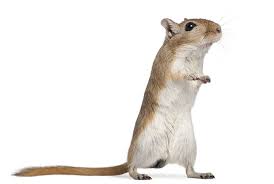
Emperor scorpions
Emperor scorpions (Pandinus imperator) are large, non-aggressive West African rainforest and savanna dwellers known for their large pincers and mild venom, comparable to a bee sting. These nocturnal, communal hunters use their poor eyesight and sensory hairs to find prey like insects and small animals. They enjoy humid environments and to hide under leaves and other objects. They are considered beginner friendly due to there demeanor and low venom significance. lives 5-8 years.

Dune scorpions
The Dune Scorpion (Smeringurus mesaensis) is a large, pale, fossorial arachnid found in the deserts of the Southwestern U.S. and Mexico that lives primarily in burrows and emerges at night to hunt insects. Its venom is not considered medically significant to humans, though stings can cause localized pain and potential allergic reactions. Dune scorpions are solitary, nocturnal, and can be identified by their sandy-beige coloration, relatively large claws, and long tails. They are considered beginner friendly. lives 5-7 years.
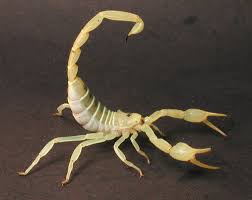
Desert Hairy scorpion
The Desert Hairy Scorpion (Hadrurus arizonensis) is North America’s largest scorpion, growing up to 6 inches long, and is characterized by the brown hairs covering its body. These scorpions are nocturnal and live in desert regions, burrowing to escape the heat. While they possess venom, its potency is low, and their sting is generally compared to a bee sting. They primarily eat insects but will also consume small lizards and other small vertebrates Considered a Beginners species.

Bearded dragon
Bearded dragons are docile, omnivorous reptiles native to Australia that are popular pets due to their gentle nature and relatively simple care requirements. They are diurnal (active during the day) and get their name from the spiky skin under their chin that they can puff out to look like a “beard” when threatened or excited. To care for a bearded dragon, you need to provide a proper enclosure with specific temperature gradients and UVB lighting, offer a varied diet of insects and greens, and practice good hygiene by washing your hands before and after handling them and their habitat. Adults require a large enclosure around 75 gallons long. Reptile carpet or newspaper is recommended for easy cleaning. They are generally tolerant of handling and can make good pets for older children with supervision. They require proper heating, UVB lighting, and a balanced diet. ALWAYS WASH YOUR HANDS BEFORE AND AFTER HANDING THEM TO PREVENT THE SPREAD OF SALMONELLA. Not all bearded dragons have this bacteria but they can carry it even if they appear healthy. A bearded dragon enclosure needs a temperature gradient, with a basking spot of 95-100°F (35-38°C) and a cooler side of 75-85°F (24-29°C) during the day, along with a nighttime temperature that dips to 65-75°F (18-23°C)
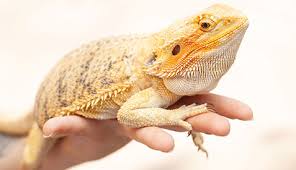
Leopard Gecko
A 15-20 gallon aquarium is suitable for one or two leopard geckos. Leopard geckos are insectivores. They eat crickets and mealworms and other insects. They can also carry the SALMONELLA bacteria so wash your hands before and after handling. They are a crepuscular species, meaning they are most active at dawn and dusk. They can live 10-20 years in captivity. A leopard gecko cage needs a temperature gradient, with a warm side ranging from 88-92°F (31-33°C) and a cooler end of 75-80°F (24-27°C). A basking surface temperature of 90-95°F (32-35°C) is also essential. At night, temperatures can drop to 65-70°F (18-21°C), but should not fall below 65°F. Use a heat mat or basking lamp connected to a thermostat to create the gradient and maintain consistent temperatures.
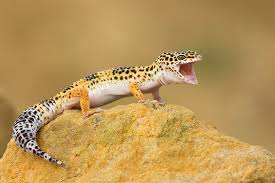
Map Turtles
Map turtles, named for the map-like patterns on their shells, are a genus of freshwater turtles found in North America, primarily in river systems. They are active swimmers and baskers, feeding on aquatic invertebrates like insects and mollusks, with specialized large-headed species adapted for crushing shells. Females are significantly larger than males. Map turtles inhabit clear, fast-flowing rivers, lakes, ponds, and other large bodies of water. They are often found near fallen trees and debris for basking. For captive map turtles, the ideal water temperature is generally between 72-80°F (22-27°C), with juveniles sometimes requiring a slightly warmer range of 78-80°F for optimal activity and growth. Map turtles are ectotherms, meaning they rely on their environment to regulate their body temperature. Maintaining the correct temperature helps keep them active, encourages a healthy appetite, and prevents stress, which can lead to illness.
